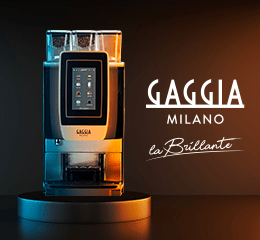MILAN – The Cup of Excellence has just ended: an edition that, like every year, stood out in the name of quality and support for participating growers, towards clearer and more honest market rules than the work of producers. To understand how the mechanisms behind this great operation move, we spoke directly with the director Susie Spindler, advisor and founder of the Alliance For Coffee Excellence (ACE).
The Cup of Excellence: What’s the story behind this competition? How and to what purpose was it born?
“The competition was born out of a larger project designed to help farmers in multiple countries receive more money for their higher quality coffee. Brazil was one of the countries in this project and BSCA (Brazil Specialty Coffee Association) was a major contributor. The first competition was held in Brazil in 1999 so that importers and roasters that did not believe Brazil could produce specialty coffee could come cup these coffees for themselves. It was also developed as a way to help farmers understand which quality improvements would yield the best results. BSCA welcomed several roasters and importers to Lavras.
They then cupped and scored the coffees of those submitted to be judged and met many of the farmers. The top ten of these were awarded and were then made available to be purchased. In order to allow the winning coffees to be purchased by a wide variety of interested companies, the first internet auction for coffee was developed for these 10 top coffee lots. The project- which was funded by the WTO/ITC, the ICO and the Common Fund for Commodities was a 5 year project that then ended right after the first competition and auction. The project purchased the winning coffees at market price so that the experimental auction could proceed. BSCA not only helped develop the first program but then stepped up and funded the second program on its own and has been a major supporter of the Cup of Excellence and its auction ever since. “
Who invented the method of pointing judgement?
“In the beginning the coffees were scored utilizing the SCAA’s cupping form. In 2001 George Howell developed the Cup of Excellence cupping form that is still in use today. The major differences in this form vs the original SCAA form was the method of scoring acidity and body. The Cup of Excellence form supported an assessment of the quality of acidity and body vs the SCAA form that supported an assessment of the volume of acidity and body. The COE form made it much easier in the early days for cuppers to reward and to distinguish Brazil’s higher quality coffees since their acidity levels were much different than some other specialty coffees. The form also modified the thinking of many specialty buyers about the relative importance of volume vs.quality of acidity for a premium coffee. Other major quality considerations that the COE form and the competition always scrutinized were “sweet and clean” characteristics. The competition is a reward for a farmer so those variables that are controlled by farmers were considered the most important. It is not a roasting competition and in fact all of the coffees are roasted, ground and prepared exactly the same.
The initial competition process was influenced by BSCA Executive Director, its quality teams, the project team as well as those competitions that were already being held. Cupping and scoring blind (not knowing anything about the coffee) was a major variable right from the beginning as we all felt it was important that the scoring not be affected by knowing the farmer, the variety, the region or the farm. This has not changed and all coffees entering the COE competition are coded and the scoring information kept with an outside auditor. Cuppers only see the code and the ground coffee on the cupping table. They are not even shown the whole beans.
The preparation and cupping standards that are required for the competition are the most stringent in the world. This is important to ensure fairness to each coffee. “
How has it changed during the years until nowadays?
“In its beginning the competition was an independent event- it is now owned and managed by the non profit organization- Alliance For Coffee Excellence. As the competition has evolved from its beginning there have been some minor changes but the overall structure and philosophy of the competition has remained the same. However, a full day is devoted to calibration of the cuppers, national judges are tested and trained, a head judge oversees every phase of the competition and ACE is very heavily involved at every step including the auction and after auction activities. The number of coffees passing through each phase of the competition has changed as has the cut off score required to move on to the next phase or to win.
ACE is always investigating ways to make sure the coffees are being scored fairly and that the preparation of the samples for cupping is the best it can be, especially as new processing methods require roasters that are incredibly skilled. A formal event for the international jury to meet the winning farmers has also been put into place in many countries but except for the very first competition the final awards ceremony is focused on the actual farmers and is often attended by country dignitaries. Vacuum packing of the winning coffees was added in about 2005 as a way to protect quality but ACE is always monitoring and finding new methods of protecting the quality of its winning coffees.
The auction began as a three day event with different opening and closing procedures but changed over time and is now the accepted world-wide even for coffees other than COE. A group of Phd auction experts at a major multinational corporation gave advice on the clock methodology that might garner the greatest prices for the farmers while still being fair to all of the buyers. A recent development is a second auction for coffees scoring high enough to get to the international jury phase but not high enough to win a Cup of Excellence. This is now gaining popularity as these coffees are still higher quality than most but at much less cost. These auctions run for a week and do not have a 3minute clock.”
What’s still necessary to improve to help the farmers?
“Many farmers still do not know about the Cup of Excellence competition and also do not understand the quality needed to win a Cup of Excellence or if they do win how to capitalize on the win to develop both long term quality and sustainable business relationships. Farmers often do not or can not selectively harvest their ripe cherries and this more than anything will impact the quality of a coffee. Many farmers are still economically reliant on immediate payment for their coffee and so sell their coffee to coyotes or to exporters and processors without a full understanding or premium payment for the quality or the ability to improve the farm. “
The Cup of Excellence could it involve others producing countries in the future?
“Absolutely- Cup of Excellence can be a positive event in any coffee producing country that has high quality coffee with an organization that is willing to coordinate the competition and open up the program to all of its farmers and ensure transparency, fairness and chain of custody. a Cup of Excellence program brings not only direct benefits from the auction but in-direct benefits adding up to millions of dollars from increased quality, recognition of farmers, and sustainable business relationships.”














